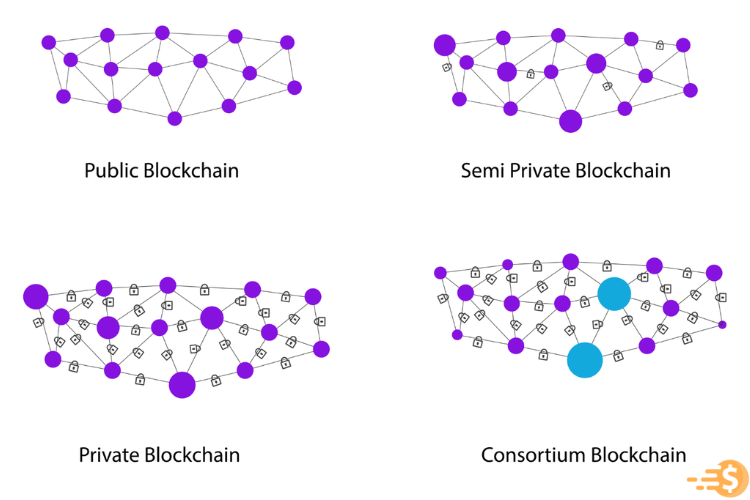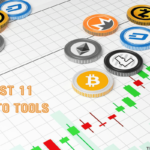In the ever-evolving world of finance, metal coin practice appears as a groundbreaking is assured to change the future scenario. This fusion of metal assets and blockchain technology promises improved security, transparency and convenience in financial transactions. Metal ledger helps in the convenient digitization and tokenization of metal assets, democratizing investment opportunities and streamlining trading processes. With its decentralized style, metal-backed cryptocurrency shows a sight into a future where traditional hurdles to entry are dismantled and economic empowerment is within reach for all. Join us as we discover the transformative potential of metal-backed cryptocurrency in transforming the future of finance.
Understanding Metallic Chain Ledger
Metallic Chain Ledger exemplifies a mixture of two powerful concepts: metal assets and blockchain technology. At its core, the Metallic chain ledger allows the digitization and tokenization of metal assets, allowing for flawless trading, ownership and transfer on a decentralized ledger. Unlike traditional financial systems that depend on intermediaries and centralized authorities, Metallic Chain Ledger works on a peer-to-peer network, enabling direct transactions among users without the need for third-party supervision. This decentralized model not only improves security but also helps to improve transparency and trust in financial transactions.
Can We Invest in Alloy Blockchain Technology?
Investing in Alloy Blockchain technology demands exploring opportunities within companies or projects using blockchain for metal assets. While you cannot invest directly in “Alloy Blockchain” as a separate individual, you can invest in companies developing or utilizing blockchain technology for metal trading, tokenization, or supply chain management. Research metal-focused blockchain startups, commodities trading platforms, or technology firms offering solutions in this space. Assess their viability, team expertise, market potential, and technological innovation before considering investment. Remember, investing in emerging technologies like Alloy Blockchain brings risks, so diversify your portfolio and consult with financial advisors for informed decisions.

Types Of Blockchain Technology
- Public Blockchain: Public blockchains are decentralized networks where anyone can participate, view, or validate transactions. They offer transparency and openness, allowing anyone to read, write, or audit the blockchain.
- Private Blockchain: Private blockchains are permission networks where access and permissions are controlled by a central authority. They are typically used within organizations or consortiums for specific business purposes. Participants need authorization to get access and interact with the blockchain. Hyperledger Fabric is an example of a private blockchain platform.
- Consortium Blockchain: Consortium blockchains are semi-decentralized networks managed by a group of trusted members or organizations. Unlike public blockchains, where anyone can join, consortium blockchains limit participation to a predefined set of nodes. Consortium blockchains offer a balance between decentralization and control, making them suitable for collective efforts among organizations in a certain industry or sector.
- Hybrid Blockchain: Hybrid blockchains combine elements of both public and private blockchains, providing flexibility and customization options. They control the strengths of public and private networks, allowing for controlled reach to sensitive data while still getting an advantage from the transparency and security features of public blockchains. Hybrid blockchains are perfect for scenarios where certain data demands privacy while other information is shared openly.
The Promise of Metal-Backed Cryptocurrency
In the world of finance, the Steel Distributed Ledger holds immense promise. This robust technology combines the strength of steel with the efficiency of distributed ledgers, making sure secure and transparent transactions. Steel Distributed Ledger provides unparalleled resilience, protecting financial data from breaches and altering. With its decentralized architecture, it permits users to hold greater control over their assets, developing trust and accountability in the digital age. As a symbol of durability and reliability, Steel Distributed Ledger represents a new frontier in financial innovation, promising a future where transactions are swift, secure, and seamlessly integrated into everyday life.
- Efficiency: Precious Metal Tokenization organizes the process of buying, selling, and trading metal assets, reducing the time and costs associated with traditional financial transactions.
- Accessibility: By digitizing metal assets, Precious Metal Tokenization opens up investment opportunities to a wide range of audiences, democratizing access to valuable supplies and financial instruments.
- Security: The immutable nature of blockchain technology makes sure that transactions performed on Precious Metal Tokenization are safe, transparent and unaffected by tampering or fraud.
- Liquidity: Precious Metal Tokenization improves the liquidity of metal assets by enabling fractional ownership and facilitating instant transferability, thereby increasing market liquidity and price discovery.
Applications of Copper Blockchain Network
The Applications of the Copper Blockchain Network span different sectors, revolutionizing how industries work. This extends far beyond traditional finance, transforming industries and empowering individuals with safe, transparent and efficient solutions.
- Supply Chain Transparency: Copper Blockchain Network ensures transparency in supply chains by tracking the journey of products from source to consumer. It verifies the authenticity of goods, mitigating counterfeiting and enhancing consumer trust.
- Commodities Trading: In commodities markets, the Copper Blockchain Network facilitates effective trading of copper and other metals. It facilitates real-time settlement, lessens transaction costs, and enhances liquidity by fractionalizing ownership.
- Renewable Energy: The network assists in transparent energy trading and incentivizes renewable energy production. Smart contracts on the Copper Blockchain Network automate transactions, making sure of fair compensation for energy producers and consumers.
- Identity Verification: Copper Blockchain Network safeguards digital identities, enabling people to control and confirm their data. It improves privacy and minimizes the risk of identity theft or fraud.
- Healthcare: In healthcare, the Copper Blockchain Network improves patient data management and interoperability among healthcare providers. It ensures secure sharing of medical records while maintaining patient confidentiality.
- Artificial Intelligence: Copper Blockchain Network supports decentralized AI networks by providing a secure and transparent environment for data sharing and model training. It enhances collaboration among AI developers and ensures the integrity of AI algorithms.
- Real Estate: The network facilitates transparent property transactions, streamlining processes such as title transfers and land registry management. Smart contracts on the Copper Blockchain Network automate real estate agreements, reducing the need for intermediaries.
- Cross-Border Payments: Copper Blockchain Network enables fast and cost-effective cross-border payments, bypassing traditional banking systems. It lessens transaction fees and settlement times while improving financial inclusion for people and businesses worldwide.
- Intellectual Property: Copper Blockchain Network shields intellectual property rights by timestamping creations on an immutable ledger.
Benefits of Alloy Token Network Protocol
There are several benefits of the Aluminum Blockchain Protocol, offering a robust framework for secure and efficient transactions. Firstly, it ensures the integrity of data and transparency, developing trust between users. Secondly, the Aluminum Blockchain Protocol minimizes transaction costs by eradicating intermediaries and automating processes through smart contracts. This organizes operations and boosts transaction settlement times. Thirdly, the protocol promotes financial inclusion by offering access to banking services for unbanked populations through decentralized finance (DeFi) applications. In addition to this, the Aluminum Blockchain Protocol fosters innovation by enabling the improvement of decentralized applications (DApps) across various industries, from supply chain management to healthcare. Overall, its decentralized nature and versatile applications make the Aluminum Blockchain Protocol a cornerstone of the digital economy.
Titanium Ledger Technology Challenges and Considerations
Implementing Titanium Ledger Technology comes with several challenges and considerations. On the other hand, interoperability with existing systems and standards is important for convenient integration. On the other hand, shedding light on scalability concerns to accommodate increasing transaction volumes is necessary. In addition to this, regulatory compliance and legal frameworks must be navigated to ensure observance of industry regulations. Furthermore, maintaining robust cyber security measures to protect against cyber threats is imperative. Lastly, encouraging user adoption and trust through education and user-friendly interfaces remains paramount. Despite these challenges, overcoming them will unlock the full potential of Titanium Ledger Technology, paving the way for a secure, transparent, and efficient financial ecosystem.
Conclusion
Brass Blockchain modernizes finance by using blockchain technology, making transactions with metal assets more effective and clear. It opens doors for everyone to take part in finance. In the future, database Blockchain will combine physical and digital assets, generating new opportunities. This innovation makes sure finance is bright and inclusive. Get ready for a transformative journey with Blockchain technology!
FAQs
How does Brass Crypto Ledger work?
Brass Crypto Ledger works as a decentralized digital record-keeper, recording transactions strongly using cryptography. It ensures transparency and avoids tampering, enabling users to trade and verify assets with confidence in the digital realm.
Is Metallic Blockchain secure in 2024?
Yes, Metallic Blockchain remains protected in 2024. Its underlying technology, blockchain, ensures robust security through cryptographic techniques and decentralized validation, making it highly unaffected by tampering and fraud.
What is the future outlook for Blockchain technology?
The future of Blockchain looks promising, with continued innovation, adoption, and integration into different sectors of the economy. As regulatory frameworks evolve and technological advancements continue, Brass Blockchain aims to develop the way we observe and interact with metal assets in the digital age.
What are some Non-Fungible Metal Assets?
Non-fungible metal assets refer to distinctive items or commodities that cannot be switched on a one-to-one basis due to their different characteristics. Examples include rare collectable coins, custom-made metal artworks, and limited-edition metal products.







